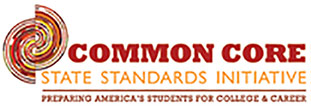Top 10 Ed Tech Trends of 2014: Part two

Since 2010, journalist, blogger, and self-described rabble-rouser, Audrey Watters, has annually summarized, poked, prodded, and otherwise dissected this amorphous blob we call edtech. This year’s dissertation once again captures the Zeitgeist. It’s also very long. Go online to techlearning.com to read Part One in our January issue. For the full effect, complete with linked references and footnotes, visit hackeducation.com
6 DIVERSITY AND TECH

Who builds technology and education technology matters. It matters because the make-up of engineering teams, for example, shapes what gets built, what problems get tackled, and how. Privileges, ideologies, expectations, and values are reproduced in technologies. (For an interesting example, see danah boyd’s article, “Is the Oculus Rift Sexist?")
News organizations have been pushing for several years for the major technology companies to release their diversity numbers. In fact, many of these companies have fought attempts to publish their EEO (Equal Employment Opportunity) data. But this year, perhaps recognizing that they must at some point address the “pipeline issue”— how to get more women and people of color into STEM-related fields— some tech companies have released this data. And it’s not pretty.
What role does edtech have in addressing issues of equity? What role might it have in making things worse? As Annie Murphy Paul argued in Slate, “Educational technology isn’t leveling the playing field. In fact, it’s making achievement gaps even bigger.”
Research is finding other differences in how economically disadvantaged children use technology. Some evidence suggests, for example, that schools in low-income neighborhoods are more apt to employ computers for drill and practice sessions than for creative or innovative projects. Poor children also bring less knowledge to their encounters with computers. Crucially, the comparatively rich background knowledge possessed by high-income students is not only about technology itself, but about everything in the wide world beyond one’s neighborhood. Not only are affluent kids more likely to know how to Google, they’re more likely to know what to Google for.
Slogans like “one laptop per child” and “1:1 computing” evoke an appealingly egalitarian vision. If every child has a computer, every child is starting off on equal footing. But though the sameness of the hardware may feel satisfyingly fair, it is superficial. A computer in the hands of a disadvantaged child is, in an important sense, not the same thing as a computer in the hands of a child of privilege.
Tools and ideas to transform education. Sign up below.
Last January, an appeals court struck down the FCC’s “net neutrality” rules, which prohibit companies from prioritizing some Internet traffic over others and/or charging more to access certain sites. Since then, there’s been lots of concern about what this might mean for the future of the open Internet. Although President Obama has since said that he wanted to see the FCC adopt “the strictest rules possible” to prevent telecommunications companies from providing “fast lanes,” many are still apprehensive about how well the open Internet will be protected by net neutrality and how the loss of it could have a major impact on schools that can only afford “slow lane” access. (Khan Academy is a partner with Comcast. So you’ll still get speedy loading times on math video lessons, I guess.)
Earlier last month, the FCC approved an overhaul to its E-rate program, which subsidizes high-speed Internet for public schools and libraries. This includes a $1.5 billion boost in funding to the program. Who benefits other than edtech companies?
So, better access to broadband and to educational technologies doesn’t fully address issues of equity, as Annie Murphy Paul’s article suggests. It raises new questions about school surveillance and policing, for example. Who has access to Internet-connected devices at home? Who has access to an unfiltered Internet at home? Whose access is monitored by schools, even when they are at home?
7 THE COMMON CORE

As attention to the Common Core continues to grow, so does the controversy surrounding it. For example, during an education committee meeting, Arizona State Senator Al Melvin spoke. “Some of the reading material is borderline pornographic,” he said. Even worse? “The math portion substitutes letters for numbers.” So, it’s sort of like algebra then, Senator?
The Common Core State standards (CCSS) have become shorthand for a number of things—the federal government’s takeover of public education, the privatization of public education, and the failures of public education. With all these competing narratives from those pro- and con-CCSS, it’s difficult to tell what exactly is Common Core.
One thing is for sure—Common Core is a major driver of new education and education technology purchases. Districts are poised to spend about $8 billion on new CCSS-aligned textbooks, although there were some efforts this year to build OER alternatives. There are also new curricula, new applications, new assessments, and new hardware. As Stanford education history professor Larry Cuban noted last year, the Common Core, along with its mandate for computer-based assessments, might finally be the thing that puts computers in the classroom.
Are students ready for the Common Core? Are students ready to be tested on their writing skills using computers and not pen and paper? Are teachers ready for the Common Core? Will it mean that they have to teach differently? What support is being offered to them? Do schools have the infrastructure to take on Common Core? The Michigan Department of Education announced in October that it was letting schools request waivers if they weren’t technologically prepared to offer assessments online. These schools will be allowed to use pencil-and-paper exams for one more year. Those technological preparations include the right hardware and adequate Internet connectivity.
8 THE INDIE WEB
This is an aspirational post. After some 35,000 words in a series that has been pretty critical about the state of education technology in 2014, I want to write about something that gives me hope.
I believe we can do better. I mean, what does an alternative to edtech as data-extraction, control, surveillance, privatization, and profiteering look like? What does resistance to the buzzwords look like? I don’t have an answer. (There isn’t an answer.) But I think we can see a glimmer of possibility in the Indie Web Movement. It’s enough of a glimmer that I’m calling it a trend. It’s my year-end series. I’ll do what I want.
The Indie Web Movement has emerged out of growing concern that what was once so special and so powerful about the Internet and the Web—a belief that we could build our own personal, digital spaces and online communities— is at risk of being lost. As ASU journalism professor Dan Gillmor wrote earlier this year, “We’re in danger of losing what’s made the Internet the most important medium in history: a decentralized platform where the people at the edges of the networks — that would be you and me — don’t need permission to communicate, create, and innovate.”
We celebrated 25 years of the World Wide Web in 2014. But now the Web’s creator, Tim Berners-Lee, insists, “it’s time to re-decentralize the Web.” The Indie Web Movement wants to encourage people to become creators, not simply consumers of Web technologies. In this process, its proponents want us to think more carefully about what happens to our digital creations and their digital public spaces. The movement’s principles read as follows: Your content is yours. When you post something on the Web, it should belong to you, not a corporation. Too many companies have gone out of business and lost all of their users’ data. By joining the Indie Web, your content belongs to you and you’re in control.
The Indie Web posits itself as an alternative to the corporate Web, but it could provide a powerful alternative to much of edtech as well, which as this series has hopefully highlighted, is quite committed to controlling and monetizing students’ and teachers’ connections and content and data.
An edtech Indie Web Movement has other important working parts too (and the following movements reached their own important milestones in 2014):
* Reclaim Hosting. This is a spin-off of Domain of One’s Own in a way that makes it easy for teachers and students to have their own Web sites.
* The DS106 Community and DS106 Radio. These communities turned three years old this year.
* LibraryBox. This is an “open source, portable digital file distribution tool based on inexpensive hardware that enables delivery of educational, health care, and other vital information to individuals off the grid." Version 2.0 was released in February.
* P2PU. This is an open source set of tools for indie online learning efforts.
* The Learning Locker. This is an “open source learning record store.”
* Howard Rheingold’s Peeragogy Handbook. Version 2.0 of this handbook hit the streets on New Year’s Eve. The OLDaily, which remains the only edtech newsletter you need.
* Connected Courses. This is “a collaborative network of faculty in higher education developing online, open courses that embody the principles of connected learning and the values of the open Web.” This program ran a “course” in the fall of 2014 and plans to continue into the new year.
* Known. This program launched in public beta form this fall with a tool to help people “reclaim” their social media data and is working on services expressly for teachers and students.
9 DATA AND PRIVACY

It’s the fourth year in a row that I’ve chosen “data and privacy” as one of the most important edtech trends. I’m not sure if I expected things to change substantially after last year’s revelations of the massive government surveillance by the NSA. But I guess I’d hoped that folks might be a little more cautious, a little more thoughtful, and a little more skeptical about data and technology adoption.
Americans are aware and increasingly concerned about the amount of data collection by the government and by businesses. Some 39% of Internet users globally say they’ve taken steps to protect their privacy and security online.
But what effect has this had on education and the current policy efforts that demand data collection? What effect has this had on edtech?
Perhaps this sentence from Politico’s Stephanie Simon in an article on data-mining in educational products gives us a hint at what the answers to those questions might be: “The NSA has nothing on the edtech startup known as Knewton.”
We’ve been told by politicians, the Department of Education, tech entrepreneurs, investors, industry analysts, researchers, journalists, and pundits that “more data,” more data analysis, and more surveillance of students and teachers will “fix education.” (Whatever “fix” means.) “More data,” and by that we often mean “more standardized testing,” has been a core part of U.S. education policy at the K–12 level for over a decade now, and the demand for “more data” is seeping into higher education as well.
Although many companies are scrambling to cash in on the data-mining boom (see below), one of the most vocal about the amazing, incredible, and pretty much totally unbelievable potential for data and analytics has to be the aforementioned Knewton. Once a test-prep company, it now offers an “adaptive learning” engine that many textbook partners, including Pearson as an investor, are incorporating into their existing products. This year, Knewton announced partnerships with Cengage, the Turkish educational publisher Sebit, Microsoft, Scandanavian publisher Sanoma, the Norwegian publisher Gyldendal, publisher and former arms dealer Elsevier, the Sesame Workshop, and Latin American textbook publisher Santillana.
10 FAILV

2015 will mark the 25th anniversary of the first 1:1 laptop program. In 1990, the Methodist Ladies’ College in Melbourne, Australia, gave all its students in years 5-12 a computer. 2015 will mark the 35th anniversary of the publication of Seymour Papert’s Mindstorms. It’ll be the 15th anniversary of Maine Governor Angus King’s proposal to give a laptop to every middle school student and teacher in the state. (Editor’s note: It’s the 35th Anniversary of Tech&Learning, too!)
I’m not sure how the edtech industry will celebrate. As I’ve argued elsewhere, edtech suffers from amnesia, always forgetting or rewriting its past. It’s committed to a story that everything is new and that everything is wonderful. It’s neither.
It’s pretty incredible that after decades of 1:1 computing initiatives, schools can still get things so very, very wrong. Or maybe it’s not. Maybe that’s what happens when you ignore history and research. Maybe that’s what happens when you focus on profits, data collection, content delivery, and assessment. When the Los Angeles Unified School District (LAUSD) announced last year that it planned to give 700,000 public school students an iPad, pre-loaded with a specially-designed Pearson curriculum, it was a very big deal.
LAUSD was hardly the only district that struggled with its 1:1 initiative. The Hoboken School District, for example, announced it planned to destroy—yes, destroy—all the laptops from its “failed” 1:1 laptop program.
Much like LAUSD, an audit of the technology in New York City Schools “found what it called ‘grossly inaccurate’ record-keeping at the Education Department, where more than 2,000 computers and tablets at a sample of department locations were either unused—still swaddled in their original wrapping—or could not be located at all.”
And much like the LAUSD’s struggles with its student information system, NYC Schools announced this year that it would scrap ARIS, the Achievement Reporting and Innovation System—a $95 million system that teachers never really used. ARIS has been around since 2007, its development overseen by then Schools Chancellor Joel Klein. The company Klein now works for, News Corp’s Amplify, has been handling the program for the past six years.
